
views
X
Research source
For better or worse, basically everybody who picks up an acoustic guitar eventually learns how to play this song—and now it's your turn. There are only 6 chords to the song, all of which have pretty simple shapes, so your fretting hand has it pretty easy. It's the strumming pattern that presents a challenge for a lot of beginners—it's long (a full 2 bars) and a bit complex, but nothing you can't master with a bit of practice.
- Put a capo on the 2nd fret of your guitar.
- Keep your 3rd and 4th fingers on the 3rd fret of the 1st and 2nd string for the entire song to create a pedal point for natural depth and harmony.
- Get comfortable with the basic chord progression of Em7 G Dsus4 A7sus4, plus Cadd9 and G/F#, before you start working on the rhythm.
- Mute your strings and practice the strum pattern until you get comfortable with it, then put it together with the chords to play the song.
Chords

Place your capo on the 2nd fret. Tune your guitar to standard tuning, then clamp on your capo just above the 2nd fret, where you would normally place your fingers to fret a chord. Be careful not to get it too close to the fret or you'll get a lot of buzzing. Sometimes beginner guitarists use a capo to "cheat" their way to simpler chord shapes, but in this case, it's not a cheat—that's how Noel Gallagher originally played it.
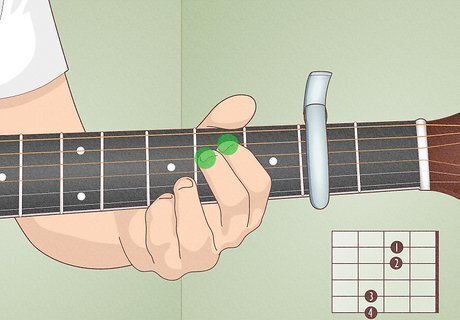
Fret the 1st and 2nd strings on the 2nd fret. Place your 4th (pinky) and 3rd (ring) fingers on the 2nd fret of the 2 highest strings and leave them there for the entire song. All the other chords that you make for this song come from changing the position of your 1st and 2nd fingers. This is referred to as a "pedal point" or just a "pedal," and it gives your playing a little more depth and harmony. Pedal points are used in a lot of rock and pop songs. The technique has been around since Bach—once you know it, you'll start hearing it everywhere.
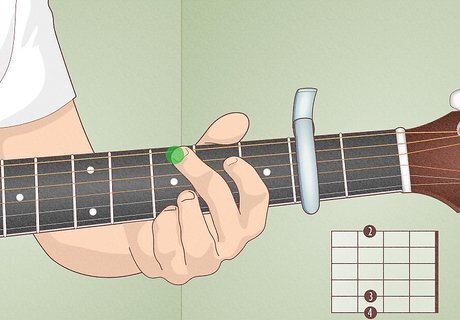
Place your 1st and 2nd fingers on the 2nd fret of the 4th and 5th strings. Make sure your 3rd and 4th fingers are sitting where they're supposed to be on the 2nd fret of the 1st and 2nd strings. Now strum all of the strings—that's Em7, the 1st chord of the song. Strum a couple of times just to get used to the shape and you're ready to move on to the 2nd chord.
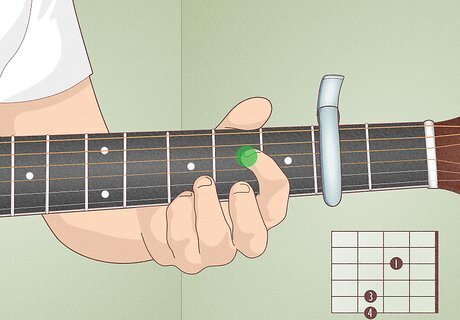
Move your 2nd finger over to the 3rd fret of the 6th string. Leave your 1st finger where it was for Em7, on the 2nd fret of the 5th string, just stretch your 2nd finger over. Remember to keep your 3rd and 4th fingers where they are as well! Strum all of the strings a couple of times—you have a G, the 2nd chord in the song. Pause here and practice switching between your Em7 and your G. Just give the Em7 a couple of strums, then switch to G for a couple of strums, then switch back to Em7.
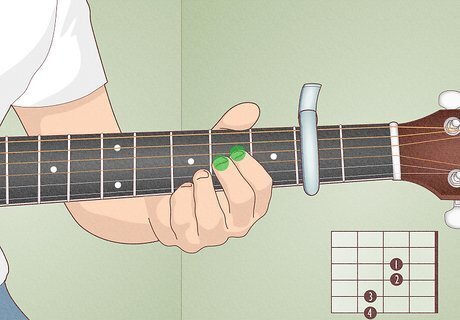
Fret the 3rd string at the 2nd fret with your 1st finger. Strum only the 1st through the 4th strings to play Dsus4. Since you're not strumming the 6th string, you can either lift your 2nd finger off the strings or leave it in place—whichever is more comfortable. Practice making the transition from Em7 to G to Dsus4 with 2 strums for each chord.
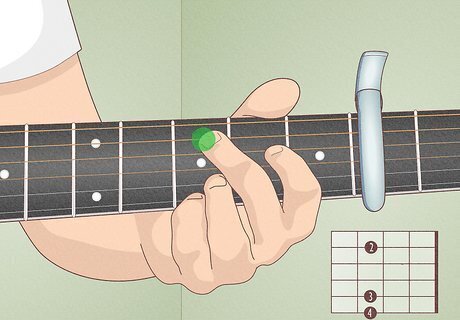
Fret the 3rd and 4th strings at the 2nd fret. You'll notice that this is exactly the same chord shape as the Em7 chord, just shifted over one string. That's convenient because A7sus4 is the last chord in the main chord progression for the song, so you'll be hopping right back to Em7 after this chord when you're playing the song. Now you have the whole chord progression for the verses, starting with Em7. Play 2 strums of Em7, 2 strums of G, 2 strums of Dsus4, 2 strums of A7sus4, then back around to Em7. Keep playing this progression until the chord changes become automatic. You can probably hear the verses in your head now—this is starting to sound like the actual song!
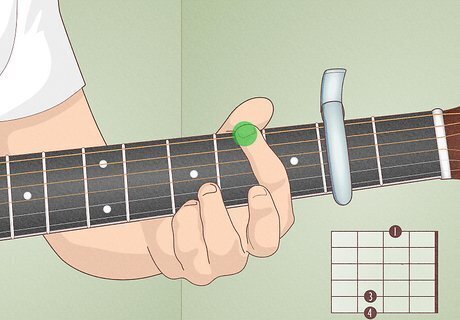
Move your 2nd finger down to the 3rd fret of the 5th string. Keep your 1st finger where it was for A7sus4, on the 2nd fret of the 4th string, and you've got Cadd9. This chord makes an appearance only once in the 1st verse and then again in the bridge (or pre-chorus) and chorus. Practice transitioning from A7sus4 to Cadd9, then from Cadd9 to Dsus4, with 2 strums for each chord.
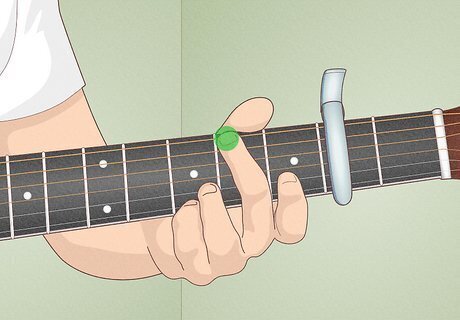
Play G with an F# base. Starting with the G chord shape, lift your 2nd finger off the strings completely and move your first finger over to the 2nd fret of the 6th string. This transition only happens once during each chorus, but it's probably the toughest part of the song in terms of chord transitions because it happens in a single beat. Practice going back and forth between G and F# with only one strum for each chord. Start slow, then gradually speed up until you've developed the muscle memory. You've got this!
Strum Pattern
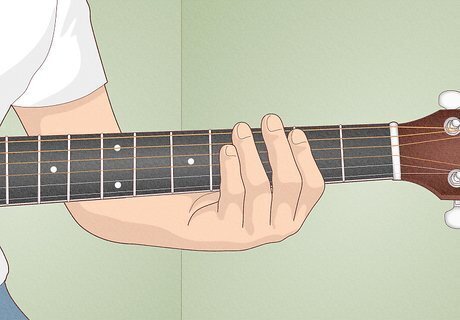
Place your fingers over the neck of your guitar to mute the strings. This is the easiest way to get the strum pattern, or rhythm, of the song down—no worries about the chords, just get that strumming hand moving. Now, get your strumming hand moving up and down over the strings in a regular rhythm, almost like a metronome. The key to the strum pattern for this song is to keep your strumming hand moving up and down all the time, even if you're not actually strumming the strings. This will help you keep time so the rhythm stays consistent.
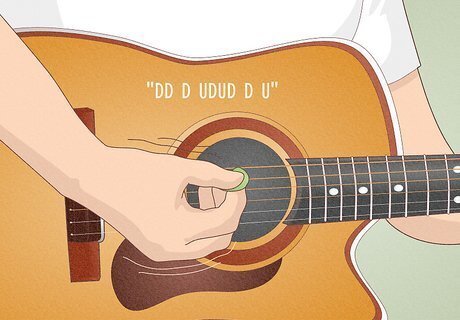
Strum DD D UDUD D U for the 1st bar. For each of those down-strums, you're going to be bringing your strumming hand back up—you just aren't actually strumming the strings on that up-strum for the first 3 strums. You only strum on the up-strum when you see a "U" in the pattern. It takes a little practice to get the hang of this. Start slow! You can gradually speed up until you're playing at the correct tempo for the song.
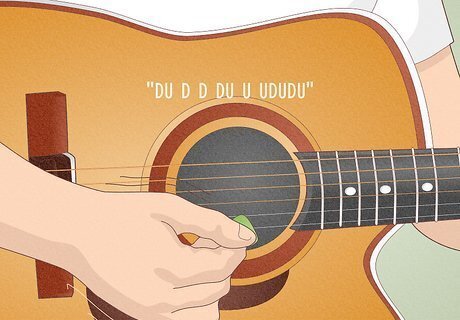
Use DU D D DU U UDUDU for the 2nd bar. The 2nd bar is a little different from the 1st, and maybe even a little trickier—but you've got this. As you did with the 1st bar, practice the 2nd bar with the strings muted until it becomes second nature.
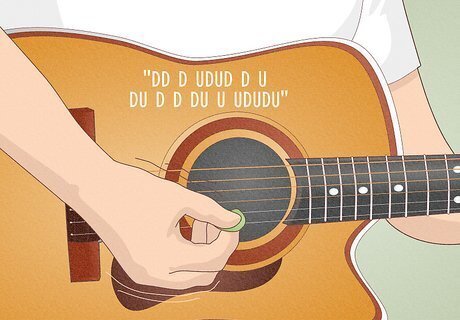
Put the 2 bars together for the full strumming pattern. Start with the 1st bar, then instead of repeating the 1st bar, go straight into the 2nd bar. At the end of the 2nd bar, go into the 1st bar. Go back to a slower tempo when you first start putting the 2 bars together so you can concentrate on getting the pattern down.
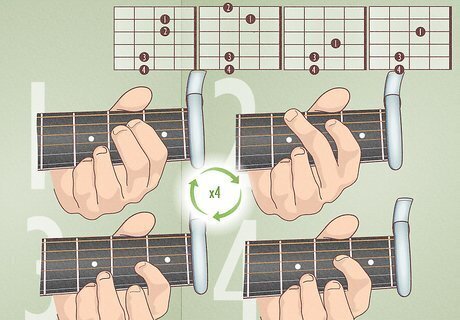
Vary the pattern on the bridge with D DU UDU D DU UDU. That 2-bar strumming pattern will get you through the verses and chorus of the song, but for the bridge, you're going to change it up again. When you practice this, start with the full 2-bar strumming pattern, transition into the bridge pattern, then go back to the full 2-bar strumming pattern. This will likely be easier to get the hang of once you start playing the full song with the chords—the variation of the strumming pattern naturally falls in line with the lyrics.
Song Structure
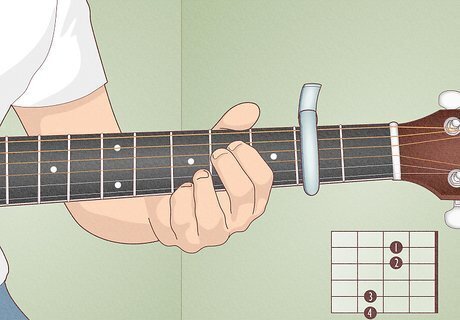
Play Em7 G Dsus4 A7sus4 as the intro to the song. This is the chord progression you practiced, and it's the same progression for all of the verses except for the first one. Play it through 4 times to intro the song before you start singing. Remember, 2 strums for each chord. This means some of your chord changes are going to be happening on odd beats—just roll with it. Changing chords in the right way with the strumming pattern is part of what gives this song its signature vibe.

Start the first verse on Em7. With the start of the 5th repetition of the progression, sing, "Today was gonna be the day...." With 2 strums for each chord, Em7 starts with the first syllable of the word "today," then G comes in on the first syllable of "gonna."
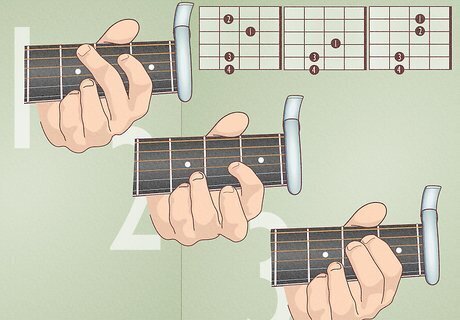
End the 1st verse with the Cadd9 variation, then play the 2nd verse. For the last line of the first verse, "about you now," play Cadd9 into Dsus4 into Asus4. Then roll right back into the regular chord progression starting with Em7 to start the 2nd verse with the word "backbeat."
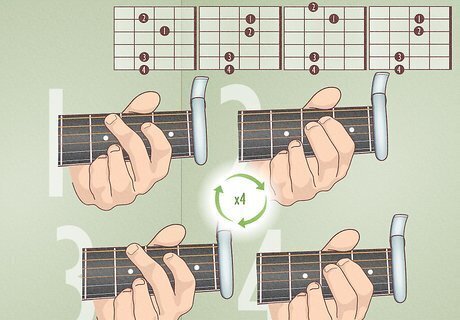
Play Cadd9 Dsus4 Em7 twice to start the bridge. You're sticking with the pattern of 2 strums for each chord, except you're going to strum Em7 for a whole bar (4 strums). If it makes it easier, think in terms of playing Em7 twice before moving on to the next progression. Then comes the tricky progression with the G/F# to close out the bridge: Cadd9 Dsus4 G G/F# Em7 G Asus4.

Use a simple Cadd9 Em7 G Em7 progression for the chorus. Play this progression 4 times for the full chorus. The progression is simple, so it's a great time to put some emotion into your playing. Vary the volume of your strumming to build intensity so you can really belt out the chorus.
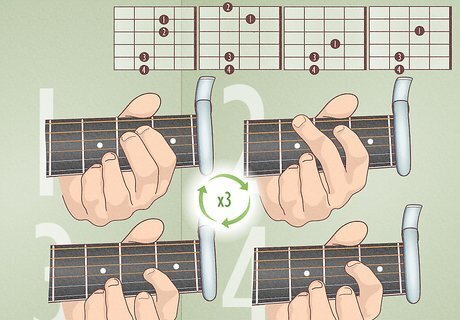
Pause, then play a 1-bar break of A7sus4. If you listen to the original recording of the song, you'll hear the pause here. Keep your strumming hand moving up and down so you can maintain the rhythm of the song, then come back in with 4 strums of A7sus4.
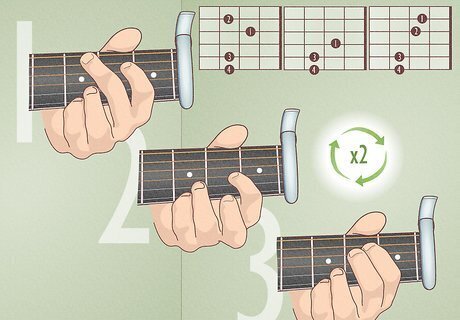
Flow right into the 3rd verse. The third verse is the same as the second, back to the basic progression of Em7 G Dsus4 A7sus4. You'll play this through a total of 3 times, with the Cadd9 Dsus4 A7sus4 variation on the final "about you now" phrase.
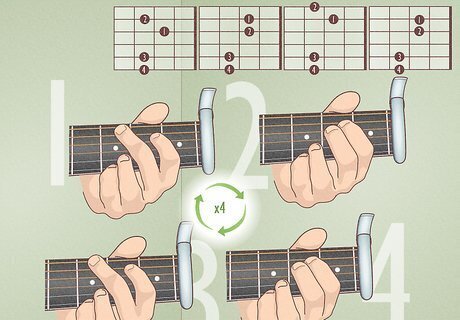
Go into the final bridge and chorus. One more bridge! Twice through with the Cadd9 Dsus4 Em7 progression, then the tricky Cadd9 Dsus4 G G/F# Em7 G Asus4 progression into the chorus. For the chorus, 4 repetitions of Cadd9 Em7 G Em7 will do it. In the original recording, Oasis repeats the chorus here—so the total song structure is 2 verses, bridge, 1 chorus, then 1 verse, bridge, 2 choruses.
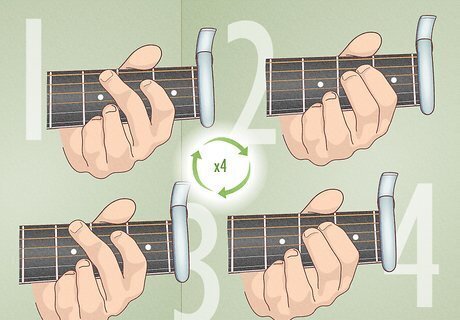
Repeat the chorus progression 4 times to end the song. At the end of the last chorus, the vocals are done—but the guitar continues playing for 4 repetitions of Cadd9 Em7 G Em7. If you're playing with accompaniment, make sure everyone involved knows when to stop playing!



















Comments
0 comment